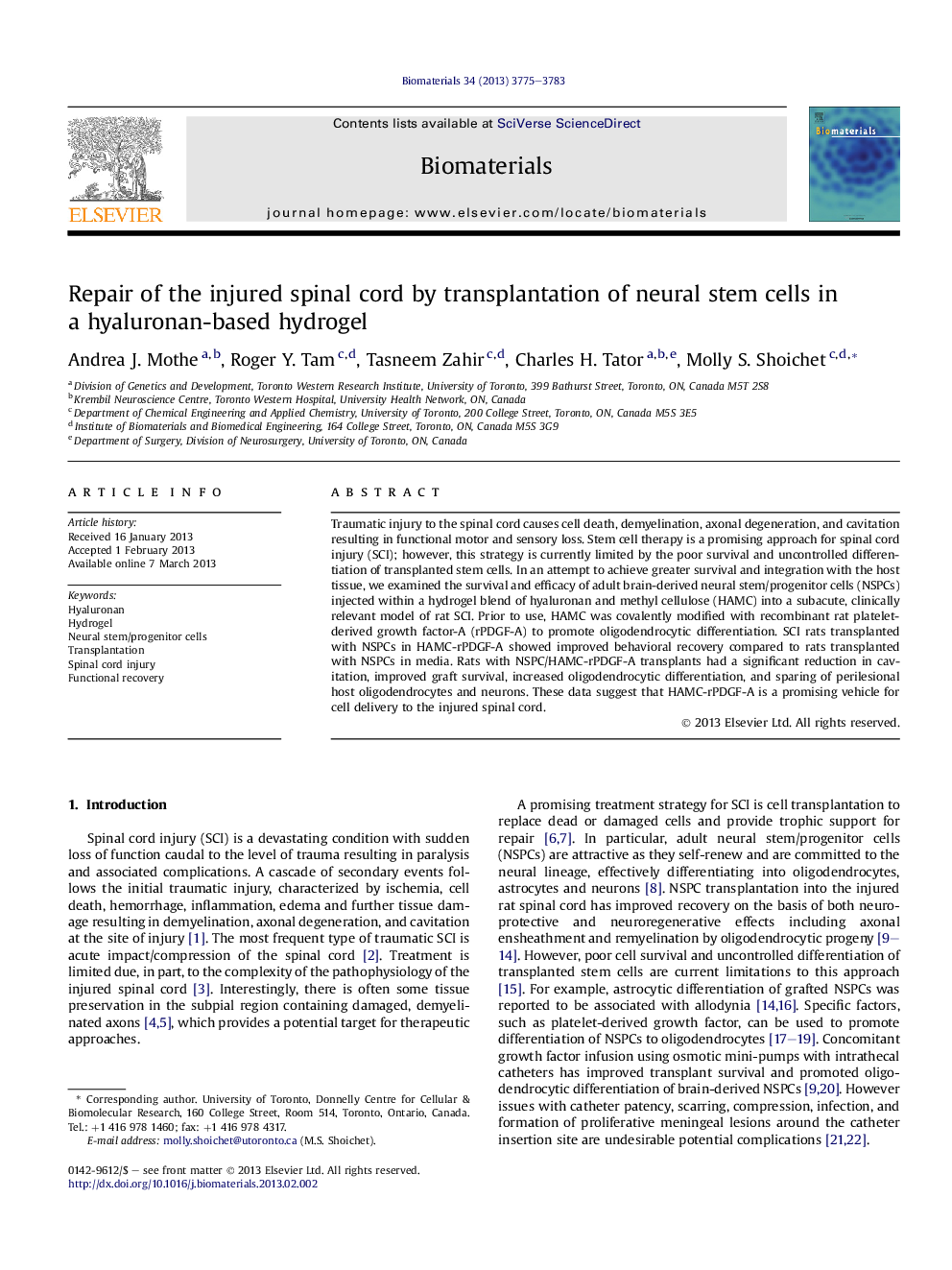| Article ID | Journal | Published Year | Pages | File Type |
|---|---|---|---|---|
| 10228740 | Biomaterials | 2013 | 9 Pages |
Abstract
Traumatic injury to the spinal cord causes cell death, demyelination, axonal degeneration, and cavitation resulting in functional motor and sensory loss. Stem cell therapy is a promising approach for spinal cord injury (SCI); however, this strategy is currently limited by the poor survival and uncontrolled differentiation of transplanted stem cells. In an attempt to achieve greater survival and integration with the host tissue, we examined the survival and efficacy of adult brain-derived neural stem/progenitor cells (NSPCs) injected within a hydrogel blend of hyaluronan and methyl cellulose (HAMC) into a subacute, clinically relevant model of rat SCI. Prior to use, HAMC was covalently modified with recombinant rat platelet-derived growth factor-A (rPDGF-A) to promote oligodendrocytic differentiation. SCI rats transplanted with NSPCs in HAMC-rPDGF-A showed improved behavioral recovery compared to rats transplanted with NSPCs in media. Rats with NSPC/HAMC-rPDGF-A transplants had a significant reduction in cavitation, improved graft survival, increased oligodendrocytic differentiation, and sparing of perilesional host oligodendrocytes and neurons. These data suggest that HAMC-rPDGF-A is a promising vehicle for cell delivery to the injured spinal cord.
Keywords
Related Topics
Physical Sciences and Engineering
Chemical Engineering
Bioengineering
Authors
Andrea J. Mothe, Roger Y. Tam, Tasneem Zahir, Charles H. Tator, Molly S. Shoichet,
